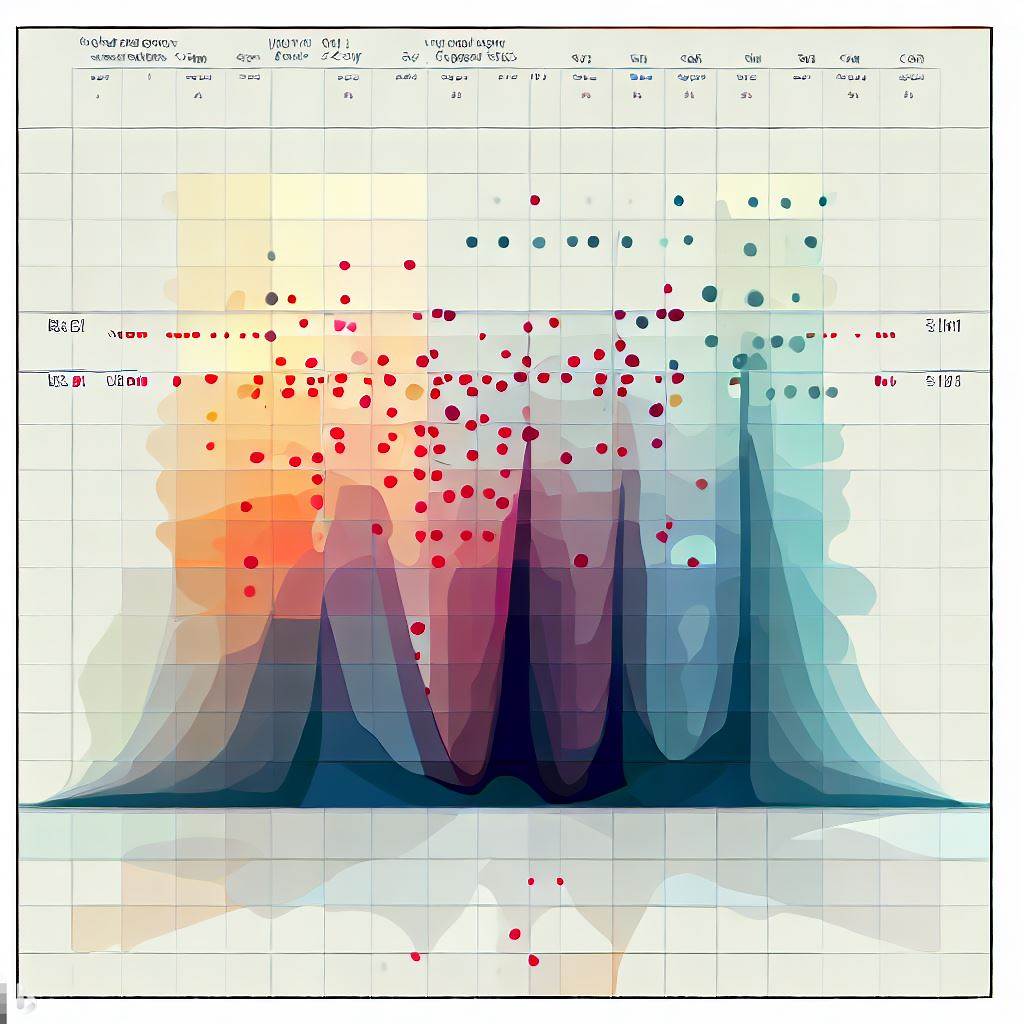
How to Optimize DBSCAN Algorithm?
DBSCAN (Density-Based Spatial Clustering of Applications with Noise) is a popular unsupervised clustering algorithm used in machine learning. It requires two main parameters: epsilon (eps) and minimum points (minPts). Despite its effectiveness, DBSCAN can be slow when dealing with large datasets or when the number of dimensions of the dataset is high. Below you can find some optimization tricks for DBSCAN:
Table of Contents
1. Feature selection and dimensionality reduction
Consider selecting a relevant subset of features, and if the number of dimensions is too high, consider using dimension reduction techniques such as Principal Component Analysis (PCA) or t-SNE.
2. Indexing
Consider storing data in a spatial index such as R-tree or KD-tree. This could speed up the computation of the pairwise distances required by DBSCAN.
3. Parallelization
DBSCAN lends itself well to parallelization because clustering can be performed independently on different regions of the dataset. Consider using parallel programming frameworks like MPI, Hadoop, or Spark to distribute the computation across multiple machines or processors.
4. Approximation
For very large datasets consider using approximate versions of DBSCAN like HDBSCAN or Divide and Conquer DBSCAN that reduce computational complexity.
5. Hyperparameter tuning.
DBSCAN has two main hyperparameters: ε (epsilon) and MinPts which controls the sensitivity of the clustering algorithm. Hyperparameter tuning using grid search or other techniques can help optimize the clustering performance of DBSCAN.

DBSCAN Optimization: Python Examples
Here are some code snippets demonstrating how to implement some of these optimization tricks in scikit-learn for DBSCAN:
1. Feature selection and dimensionality reduction using PCA:
from sklearn.decomposition import PCA
from sklearn.cluster import DBSCAN
# assuming X is your input data
pca = PCA(n_components=2) # set number of components as desired
X_pca = pca.fit_transform(X) # reduce dimensionality using PCA
dbscan = DBSCAN(eps=0.5, min_samples=5) # set eps and min_samples as desired
labels = dbscan.fit_predict(X_pca) # cluster data
2. Indexing using the KDTree implementation in scikit-learn:
from sklearn.neighbors import KDTree
from sklearn.cluster import DBSCAN
# assuming X is your input data
tree = KDTree(X) # build KD tree on input data
def my_dist_matrix(X):
# define custom distance metric using KD tree
dist, _ = tree.query(X, k=2)
return dist[:, 1]
dbscan = DBSCAN(eps=0.5, min_samples=5, metric=my_dist_matrix) # set eps and min_samples as desired, use custom distance matrix function
labels = dbscan.fit_predict(X) # cluster data
3. Parallelization using the joblib library in scikit-learn:
from sklearn.externals.joblib import Parallel, delayed
from sklearn.cluster import DBSCAN
# assuming X is your input data
def dbscan_region(X_region, eps, min_samples):
dbscan = DBSCAN(eps=eps, min_samples=min_samples)
labels_region = dbscan.fit_predict(X_region)
return labels_region
# define parameters for parallel processing
eps = 0.5
min_samples = 5
n_jobs = -1 # use all available cores
batch_size = 1000
# parallelize clustering across data batches
labels = np.empty_like(X, dtype=int)
for batch_start in range(0, len(X), batch_size):
batch_end = min(batch_start + batch_size, len(X))
X_batch = X[batch_start:batch_end]
labels_batch = Parallel(n_jobs=n_jobs)(
delayed(dbscan_region)(X_region, eps, min_samples) for X_region in np.array_split(X_batch, n_jobs)
)
labels[batch_start:batch_end] = np.concatenate(labels_batch)
4. Approximation using HDBSCAN:
import hdbscan
# assuming X is your input data
hdbscan = hdbscan.HDBSCAN(min_samples=5, alpha=1.0) # set min_samples and alpha as desired
labels = hdbscan.fit_predict(X) # cluster data
5. Hyperparameter tuning using GridSearchCV:
python
from sklearn.model_selection import GridSearchCV
from sklearn.cluster import DBSCAN
# assuming X is your input data
param_grid = {
'eps': [0.2, 0.5, 1.0],
'min_samples': [3, 5, 10]
}
dbscan = DBSCAN()
grid_search = GridSearchCV(dbscan, param_grid)
grid_search.fit(X)
best_eps = grid_search.best_params_['eps']
best_min_samples = grid_search.best_params_['min_samples']
dbscan_best = DBSCAN(eps=best_eps, min_samples=best_min_samples)
labels = dbscan_best.fit_predict(X) # cluster data
Importance of performance evaluation in clustering
Importance of performance evaluation in DBSCAN clustering Performance evaluation in DBSCAN clustering is vital for several reasons. It helps with the feasibility and effectiveness of the algorithm applied on a specific problem. Here are some important reasons:
- Accuracy: Performance evaluation helps to determine the accuracy of the clustering algorithm in correctly identifying the clusters in the dataset. It helps to measure how well the algorithm has categorized the data points.
- Efficiency: Performance evaluation also helps to assess the efficiency of the clustering algorithm. It helps to determine how fast the algorithm can cluster large datasets and how well it can handle complex structures.
- Comparison: Performance evaluation provides a basis for comparison between different clustering algorithms. It helps to determine which algorithm is best suited for a particular problem.
- Parameter tuning: Performance evaluation helps in tuning the parameters of the clustering algorithm. It provides insights into the best parameters that can be used to achieve optimal clustering results.
- Interpretability: Performance evaluation also helps to interpret the results of clustering. It provides a means to validate the clusters, and to assess the quality of the clustering results in a meaningful way.
There are various methods for evaluating clustering performance, including internal evaluation, external evaluation, and relative evaluation.
We also did some interesting practical runtime tests on DBSCAN algorithm which can give ideas for relative evaluation.
Internal Evaluation
Internal evaluation methods use metrics such as silhouette coefficient, Dunn index, and Calinski-Harabasz index to evaluate the quality of a clustering solution based on the data itself.
These metrics assess the compactness and separation of clusters and help in identifying the optimal number of clusters.
External Evaluation
External evaluation involves comparing the result of clustering with a known ground truth, such as a pre-existing classification of the data. This method helps in determining how well the clustering algorithm has captured the underlying patterns in the data and provides a measure of the accuracy of the clustering solution.
Relative Evaluation
Relative evaluation involves comparing multiple clustering solutions generated by different algorithms or with different parameter settings. This method helps in selecting the best clustering solution and provides insight into the relative strengths and weaknesses of different clustering algorithms. Overall, performance evaluation is critical in clustering as it helps to identify the optimal clustering solution for a given dataset and can lead to meaningful insights and improvements in decision-making.
In summary, performance evaluation is critical in ensuring that the DBSCAN clustering algorithm is effective and practical in gaining insights from data. It provides a framework for assessing the effectiveness of the algorithm in identifying meaningful clusters in the data.
